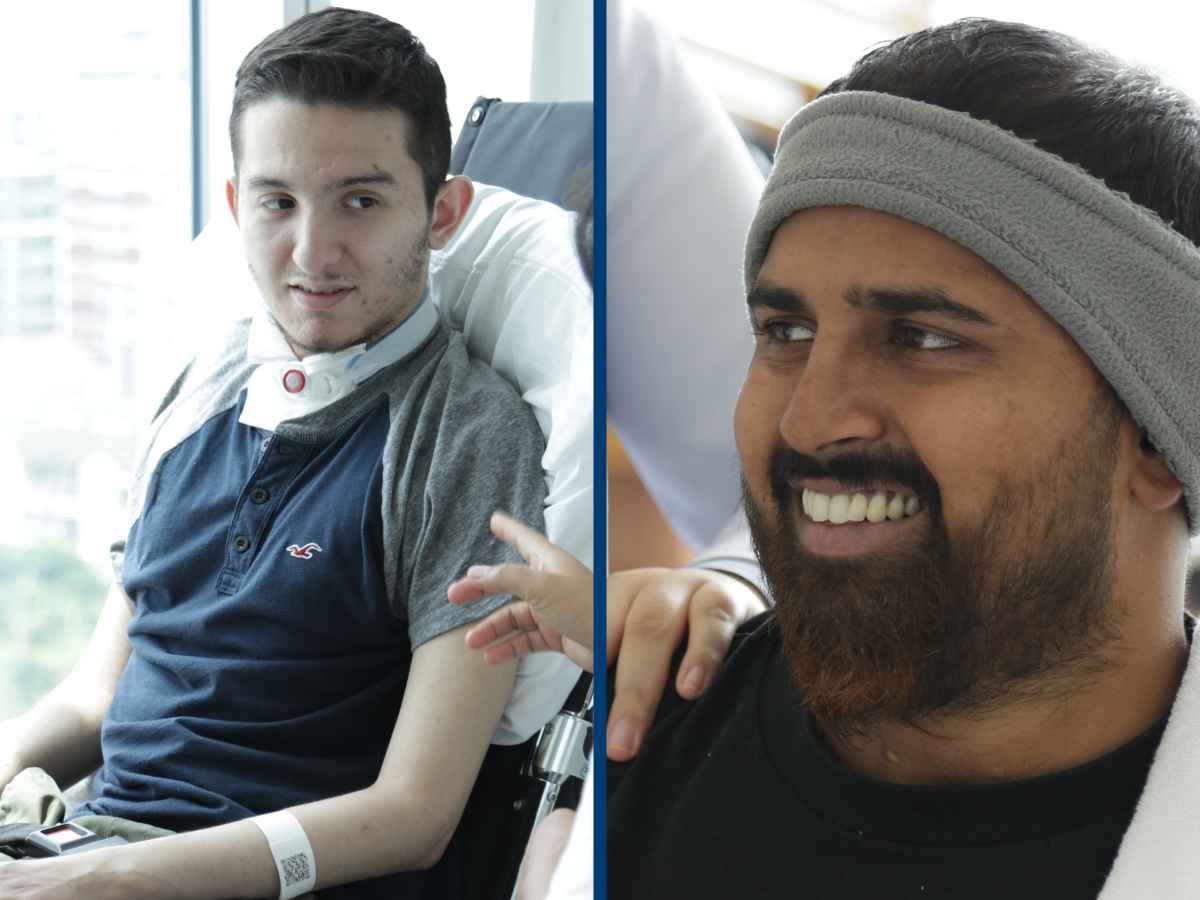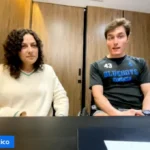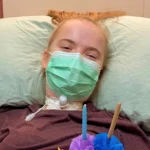C4 spinal cord injury is one of the most severe injury levels and commonly has a significant impact on the patient’s motor function. Many patients are left with quadriplegia and complete loss of independence. Traditionally, patients have had little in the way of treatment options, with many focusing on the management of the condition, rather than the cure. Epidural stimulation however allows patients a more robust treatment. Whilst epidural stimulation does not promise a cure, the majority of patients see improvements in their motor, autonomic, and sensory functions.
Many of Verita Neuro’s patients who come for treatment of a C4 level injury are now treated with the implantation of 2 spinal stimulators, followed by specialist physical and occupational therapy and stem cell injections. Amarjit Singh was the first patient to receive this protocol with 2 stimulators implanted. We spoke to him and Edward Lopez, who also received 2 stimulators and was treated in Guadalajara, Mexico. Amarjit’s interview took place following his first visit to us whilst Edward’s interview was during a follow-up visit to have his stimulators re-mapped.
Please can you introduce yourself and tell us about your injury?
Amarjit: I’m Amarjit Singh. I got hurt on September 10, 2017. I was coming back from work with my brothers and it was early morning, 5 or 6 am. The street was all foggy and my brother missed it and hit a lamppost. I was sleeping in the backseat and when I woke up three weeks later, I was paralyzed from the neck down. I have a C4 – C5 level injury and basically, I have no control below my neck.
Edward: I’m Edward Lopez, 26 years old. I have a C4 spinal cord injury, ASIA B and I was injured in April 2018.
What made you decide to come to Verita Neuro?
Amarjit: I was always looking for solutions to this problem. And even when I got hurt two years ago, I came across epidural simulation but it just took me two years of courage to actually man up and come do the surgery.
How long after the surgery did you see changes and how are you feeling now?
Amarjit: After epidural stimulation, I noticed, some gain in muscles that I didn’t have before. I also got stem cells. But that takes time to kick in, so those results are only gonna come after six months or so. But after having the devices I’ve seen more motor control, I’ve started to step, grasp things, and do a lot more in physical therapy and occupational therapy.
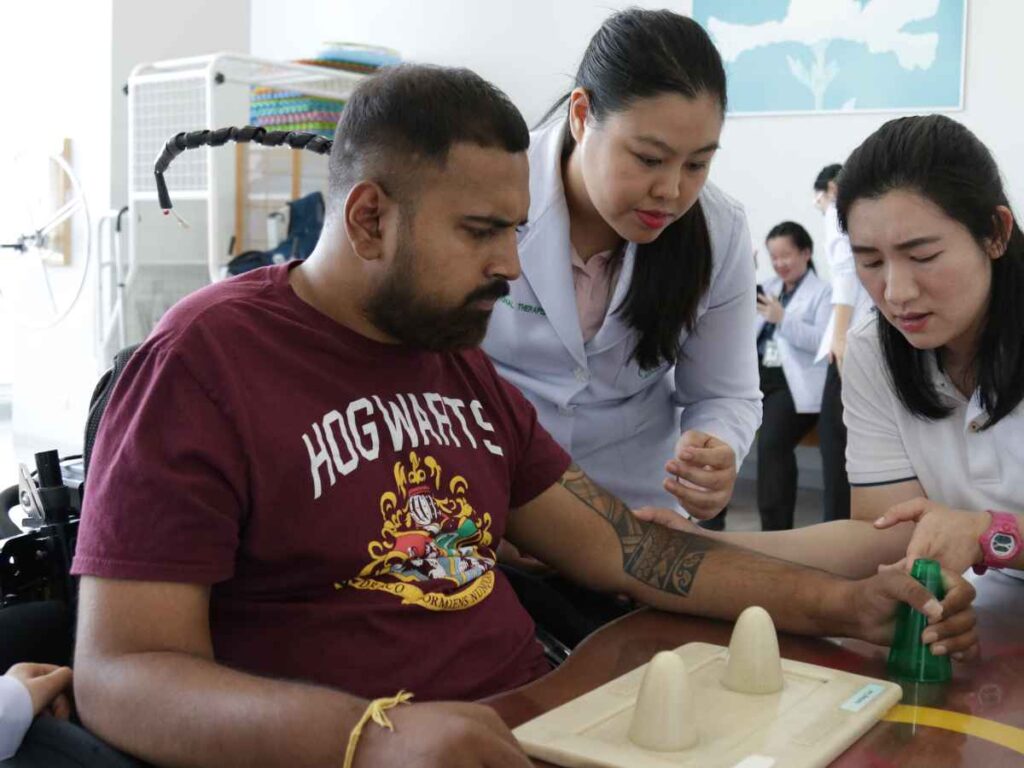
Edward: Well I got the surgery in 2020 and they started doing the mapping. It worked pretty quickly, like, the first week they were doing things with my legs. Then I came here to finish the rest of the mapping and I think it was better this time because they have more experience. So we did find a lot of programs for the legs. When I’m standing, in a chair and in the bed.
How is your overall progress so far and do you have goals?
Amarjit: Starting in occupational therapy, I didn’t really have much hand control or anything but after a device goes on, and after a couple of weeks focusing on my hands, I’ve seen a lot of progress. I can pick up cones, I can pick up pegs from a pegboard. I could lift my arm. My tricep had never worked before, so it actually started firing after my surgery. Overall, it’s a process but it’s a start.
Edward: I wanted to do stepping but I can’t tolerate the e-pacer enough. My neck gets too tired. So hopefully, I come back or I get a therapist to go to my house and then we can do mapping and I can take steps. And then strengthen my bones and my muscles and nerves.
What is the biggest improvement you have noticed after the surgery?
Amarjit: The biggest improvement I saw after surgery was that my triceps never worked before. So after surgery, immediately after surgery, after a couple of days, I saw my triceps firing. I could do more movements and workouts with them. And after a while, it has been 3 or 4 weeks of stepping in with the e-Pacer. I’ve seen I’m getting more control over my legs. I know exactly how to move them and place them where exactly I want to place them.
Edward: Well, they did pretty fast, they found a program the first week. But they’re continuing mapping. So it’s a two-week program and I started standing on the second week. They found a program to keep my legs locked pretty quickly. But for stepping I have to wait until I can tolerate the e-pacer for longer. With bladder and bowel function, there’s not much change. I think with the bowel program it’s coming out on its own more often, which is something I want to learn to control more but it’s coming out more often now without suppository.
Do you like it here?
Amarjit: Yes, it’s my first time in Thailand, and overall my experience has been wonderful. The staff are wonderful. The therapists are wonderful, from the nurses up to the cleaning lady, they’re all very helpful.
Edward: Oh, well here it’s pretty nice. The room is close to the therapy room and I liked it. But the mattress is a little thin so I had to bring my own thicker mattress. I had two therapists and they were pretty quick on finding the programs and the food is good too. I think the mapping is good. The physical therapy is also pretty good. I just wish the doctors had visited the room a little more often.
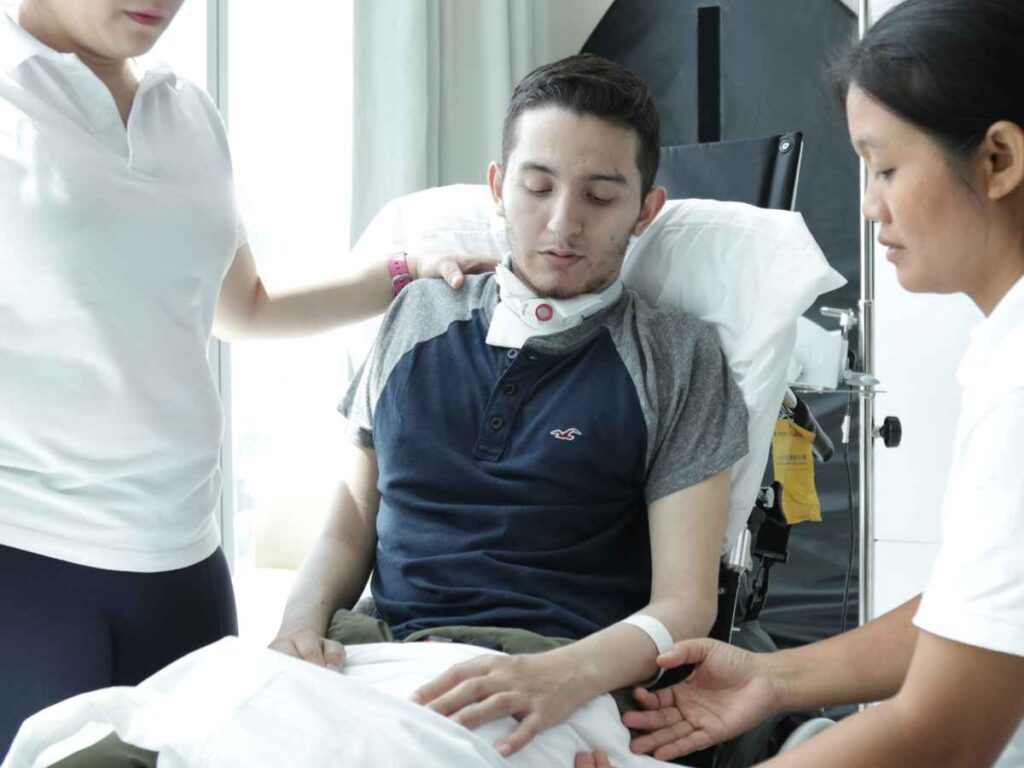
How is your new daily life and routine here?
Amarjit: Yes, there’s a lot of it and I just had to be open to try things, I guess. Everything else is really good
Edward: I wake up at 8 am and do therapy till 10. Then I have another therapist for without the stimulator from 12 to 1, or 1 to 2. Then from 2 till 4, I do more exercises and then I relax. The medical care is not too different from at home. Sometimes maybe the nurse at night helps us out a lot. But during the day, my family does most of the routines. Sometimes the nurse helps us out but it’s not too much of a difference.
Do you have a message for anyone considering epidural stimulation?
Amarjit: Whoever’s considering epidural stimulation, I encourage you to try it. At this point, it’s the only solution to this problem. So don’t give up hope because it’s a light in a dark tunnel. That’s what I’d say. This injury is a very tough injury, and you cannot do it without your loved ones. I have my brothers here. My mother was here, my father was here and without family support, it’s very hard to get over this. But I’ve got my family, who’re a lovely family and they helped me every step of the way, and I think that’s a really good thing to have to recover.
Edward: If you’re recently injured, I guess I’d say see how your recovery goes naturally because sometimes people do recover. But if you don’t, then you’re just gonna have to wait and do research on how spinal cord injury works. The doctors aren’t going to tell you too much, especially in the United States. So just look at what’s going on, at the treatments that are available in the USA and in other countries and in clinical trials, and see which ones you want to try out.
The above are not verbatim transcripts of Edward and Amarjit’s interviews. Some comments have been slightly altered or re-arranged in order to improve the reading flow. You can see video content from Edward and Amarjit on our Epidural Stimulation Now YouTube channel.

